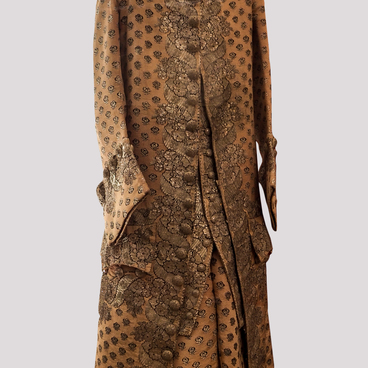At the end of the 16th century, the population of the Polish-Lithuanian Commonwealth was multinational. Catholics, Orthodox Christians, Protestants, Jews and Muslims lived on the territory of Poland and Lithuania. In the early years, religious tolerance prevailed. However, during the reign of the zealous Catholics Stefan Batory and Sigismund III Vasa, the situation in the country changed: the persecution of the apostates began. In addition, the guarantees for Orthodox subjects, proclaimed in the conclusion of the Union of Lublin in 1569, were buried in oblivion.
The culmination of this policy was the Union of Brest of 1596. According to it, the Orthodox Church of Ukraine and Belarus recognized the Pope as its head but kept the services in the Slavic language and the rituals of the Orthodox Church. The signing of the Union of Brest led to a sharp increase in religious confrontation, reaching up to uprisings and murders. For a quarter of a century, the Orthodox of the Polish-Lithuanian Commonwealth, who did not accept the Union of Brest, remained without a metropolitan.
The grandee of the Grand Duchy of Lithuania, Prince Konstantin Ostrogski, sharply criticized the union and oppression of the rights of Orthodox believers. With the support of Prince Ostrogski in 1597, the book Apocrysis was published as a response from the Orthodox side in theological controversy. With documentary validity and logical harmony, the author, possessing great erudition, denounced the supporters of the union, renegade bishops, popes, magnates of the Commonwealth, defended Orthodox rites. The widespread use of proverbs, parables, anecdotes strengthened the satirical nature of the work.
‘Apocrysis’ was very popular, became the impetus for the development of polemical literature, contributed to the rise of the liberation movement in the Commonwealth. The anti-Catholic orientation of ‘Apocrysis’ caused severe persecution of the book. The fact that the book is enclosed in a full leather binding speaks of its importance as a book monument, since leather was an expensive material, guaranteeing the maximum protection of the pages from moisture and damage.
Initially, the book was published in Vilna in Polish, but the following year, 1598, ‘Apocrysis’ was also published in Russian. It is a similar version that is kept in the Smolensk Museum-Reserve.
The culmination of this policy was the Union of Brest of 1596. According to it, the Orthodox Church of Ukraine and Belarus recognized the Pope as its head but kept the services in the Slavic language and the rituals of the Orthodox Church. The signing of the Union of Brest led to a sharp increase in religious confrontation, reaching up to uprisings and murders. For a quarter of a century, the Orthodox of the Polish-Lithuanian Commonwealth, who did not accept the Union of Brest, remained without a metropolitan.
The grandee of the Grand Duchy of Lithuania, Prince Konstantin Ostrogski, sharply criticized the union and oppression of the rights of Orthodox believers. With the support of Prince Ostrogski in 1597, the book Apocrysis was published as a response from the Orthodox side in theological controversy. With documentary validity and logical harmony, the author, possessing great erudition, denounced the supporters of the union, renegade bishops, popes, magnates of the Commonwealth, defended Orthodox rites. The widespread use of proverbs, parables, anecdotes strengthened the satirical nature of the work.
‘Apocrysis’ was very popular, became the impetus for the development of polemical literature, contributed to the rise of the liberation movement in the Commonwealth. The anti-Catholic orientation of ‘Apocrysis’ caused severe persecution of the book. The fact that the book is enclosed in a full leather binding speaks of its importance as a book monument, since leather was an expensive material, guaranteeing the maximum protection of the pages from moisture and damage.
Initially, the book was published in Vilna in Polish, but the following year, 1598, ‘Apocrysis’ was also published in Russian. It is a similar version that is kept in the Smolensk Museum-Reserve.


